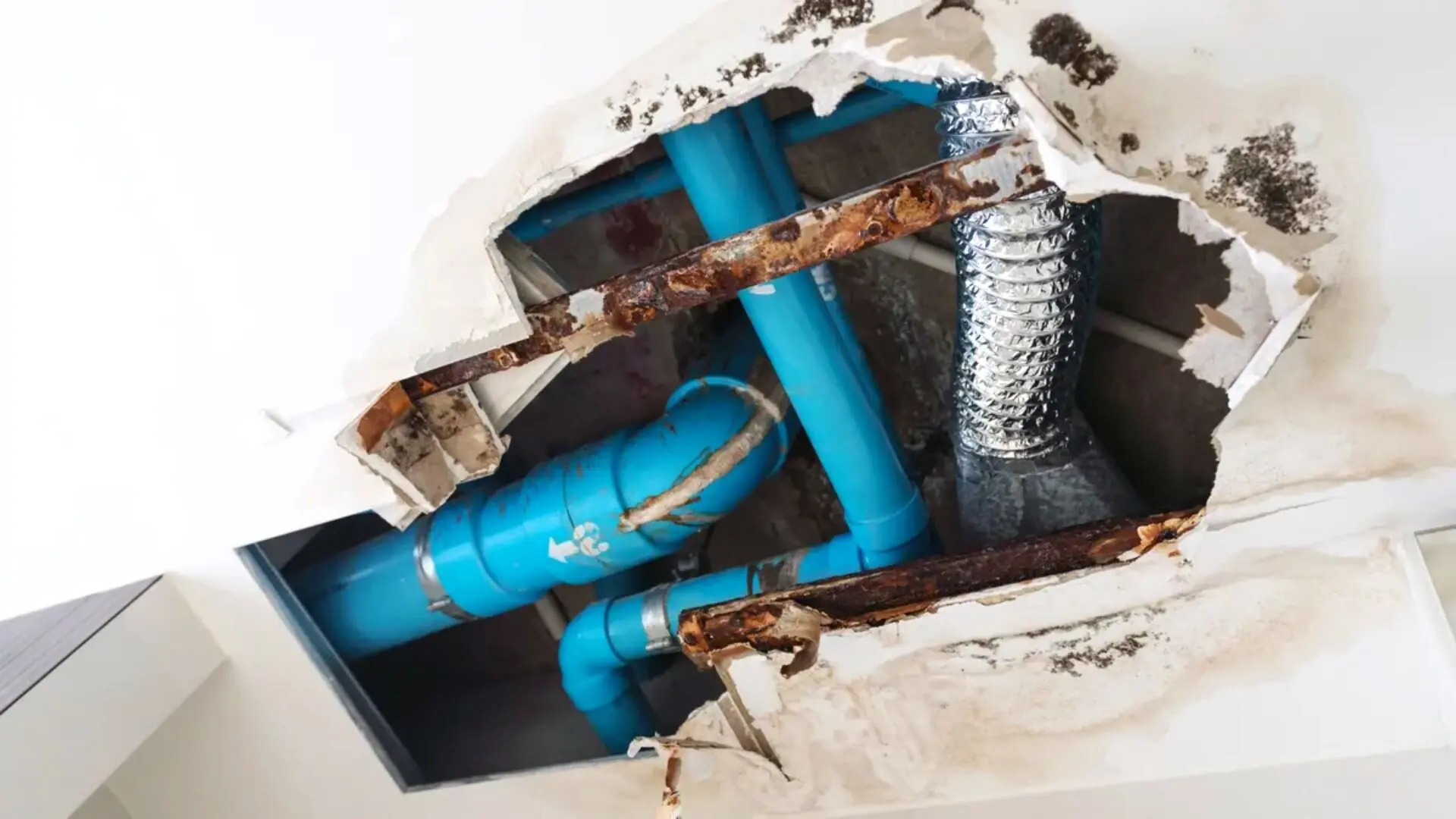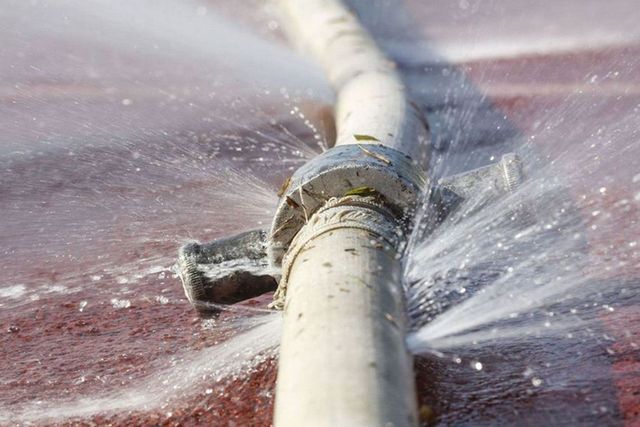Signs of a Burst Pipe: How to Identify and Address the Issue Before It Escalates
Signs of a Burst Pipe: How to Identify and Address the Issue Before It Escalates
Blog Article
Protecting Against Ruptured Pipes: Crucial Tips to Safeguard Your Pipes
Protecting against burst pipelines is a vital issue for house owners, particularly during chillier months when the risk of cold is heightened. Applying strategic measures such as proper insulation, routine inspections, and preserving consistent indoor temperatures can substantially minimize the probability of pipeline failure. Furthermore, recognizing emergency situation treatments furnishes home owners to react promptly to prospective pipes concerns. Nonetheless, many are uninformed of the specific susceptabilities that their pipes may deal with. Exploring these susceptabilities can offer invaluable understandings into protecting your plumbing system successfully.
Understand Pipeline Vulnerabilities
Comprehending pipeline vulnerabilities is necessary for efficient plumbing upkeep and avoiding costly damages. A number of elements add to the sensitivity of pipes to ruptureds, consisting of product composition, age, and environmental problems. Older pipes, particularly those made from galvanized steel or polybutylene, usually break down gradually, resulting in increased danger of tears and leaks.
Temperature level fluctuations can also dramatically impact pipe honesty. In colder climates, water caught in pipelines can freeze, broadening and applying pressure on the pipe walls, which might ultimately cause a ruptured. High water stress can stress pipes, specifically at joints and bends, enhancing the chance of failing.

Insulate Piping Correctly
Correct insulation of pipes is important for protecting against freezing and subsequent ruptureds throughout cold weather condition (burst pipe). Protecting your pipes system properly safeguards against temperature drops that can lead to costly damages. Begin by identifying vulnerable locations where pipelines are revealed to outdoor temperature levels, such as basements, attics, and exterior walls
Use foam pipe insulation sleeves or cover insulation tape around these locations to provide a safety barrier. Guarantee that all areas of the pipes, specifically those with restricted warm exposure, obtain ample insulation. Pay special attention to joints and installations, as these are much more vulnerable to cold.
When shielding, it's necessary to select materials that satisfy local building ordinance and are proper for the particular environment. Fiberglass insulation is usually advised for its thermal resistance residential properties. Furthermore, consider using heat cables or tape in severe problems, which can be connected in to provide additional warmth
On a regular basis inspect shielded pipelines for any type of signs of wear or damages, as compromised insulation can diminish its performance. By taking these positive steps, you significantly minimize the threat of pipe ruptureds, making certain a trustworthy plumbing system throughout the cold weather.
Maintain Constant Temperature
A secure indoor temperature level is crucial for avoiding ruptured pipelines during the freezing months. When temperature levels decrease, water within pipelines can freeze, producing and increasing stress that might inevitably cause the pipelines to burst.Using a programmable thermostat can help handle indoor temperatures efficiently, guaranteeing that rooms news with plumbing remain warm even when the residence is vacant.
This small flow of water can avoid cold by relieving stress within the pipes. By applying these methods, homeowners can substantially reduce the threat of pipeline ruptureds and protect their plumbing systems versus the rough winter season components.
Frequently Evaluate Pipes
Regular evaluations of plumbing systems are important for protecting against ruptured pipes and keeping overall home stability. During these assessments, it is necessary to check out visible pipelines for signs of corrosion, leakages, or put on.
Furthermore, examining links and joints is essential, as these points are frequently vulnerable to leakages. Homeowners should additionally analyze water pressure degrees, as excessive stress can strain the plumbing system and increase the threat of pipe bursts.
Think about organizing professional pipes assessments at the very least when a year, visit this site right here specifically prior to winter season, to ensure your system is prepared for cooler temperatures. By being aggressive in your approach, you can secure your home versus the pricey and disruptive consequences of burst pipelines.
Know Emergency Situation Procedures
Understanding emergency treatments is important for every homeowner, specifically after performing regular pipes evaluations. Being planned for a plumbing emergency can substantially alleviate damage and save expenses. Locate your main water shut-off shutoff; it is typically discovered near the water meter or where the primary line enters your home. Acquaint on your own with its procedure, as closing off the supply of water swiftly can avoid considerable flooding.
Following, keep important tools helpful. A pipes emergency set must include a wrench, bettor, and towels, in addition to a flashlight and a container for little leaks. In addition, think about having the get in touch with info for a trusted plumber conveniently offered, needs to the circumstance rise beyond your control.
If you spot a leak or ruptured pipeline, quickly shut off the water system and alert your plumber. Record the damages with photos for insurance policy purposes. Know the signs of potential plumbing issues, such as unusual water stress variations or damp places on wall surfaces
Inevitably, aggressive expertise and speedy action are crucial in handling pipes emergency situations, ensuring your home continues to be protected and reducing potential damages.

Conclusion
To conclude, protecting against burst pipelines requires a diverse technique that consists of understanding pipeline susceptabilities, appropriate insulation, maintaining regular indoor temperature levels, routine assessments, and understanding of emergency procedures. By implementing these essential strategies, the threat of pipes failures can be dramatically decreased, thereby making sure the longevity and performance of the plumbing system. Positive measures not just safeguard against possible damage but additionally add to total water conservation and the security of residential property.
In chillier climates, water trapped in pipes can ice up, applying and expanding stress on the pipe wall surfaces, which might ultimately lead to a ruptured. When temperatures decrease, water within pipes can ice up, developing and broadening pressure that might eventually create the pipes to ruptured. By carrying out these methods, house owners can considerably reduce the threat of pipe ruptureds and protect their pipes systems against the harsh wintertime elements.

Report this page